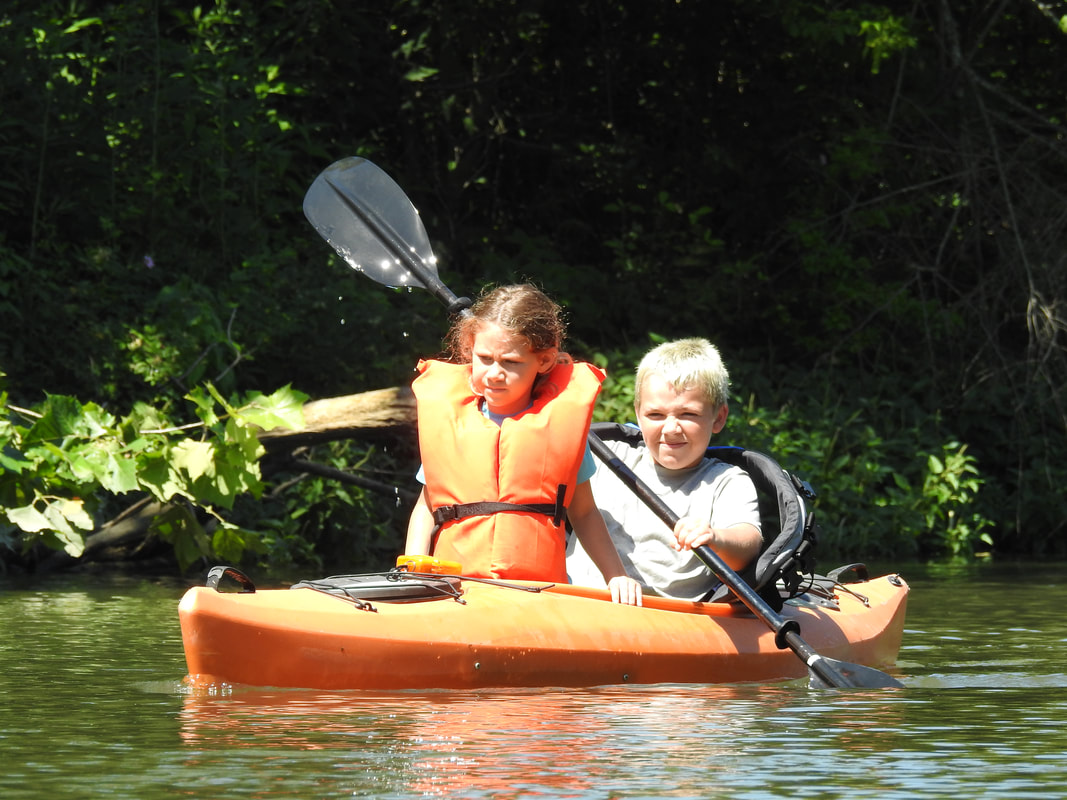|
People often ask me what type of kayak they should buy and I think I can save you a lot of money by helping you pick right the first time! These tips are not for experienced paddlers, but for those getting into the sport. Ask yourself these questions to get started:
1. WHERE will I be paddling most? Flat water or flowing? 2. Single or Double kayak? (singles are lighter, turn easier, easier to transport) Doubles are longer, straighter tracking, heavier, harder to transport but necessary if you want to be able to paddle together with a friend or child. You can paddle a double by yourself but hard to paddle a single with two!! 3. Will I be paddling ONLY in warm water or do I want to be able to paddle year-round? I will state right away that I always recommend sit-in kayaks instead of sit-atops UNLESS you are only going to be paddling in warm water year round. In a sit-atop you WILL GET WET every time out, so keep that in mind. GENERAL TIPS: • The longer the boat, the faster it will paddle and the straighter it will track. 8' is a SHORT boat. 10' is "normal" and 12'+ is a longer boat. • Shorter boats turn easier, get into tighter spaces easier, and will, all things being equal, paddle a little slower. • The more "volume" a boat has, the higher it will float in the water, allowing you to paddle in shallower water. Heavier paddlers will want a higher volume boat than lighter paddlers. • "Roto-molded" boats are much stronger than two-piece or welded-seam boats. If the boat has a different color top than bottom, it is welded or two-piece. These boats are generally thinner walled (and weaker), less expensive, and less durable than roto-molded boats. Dagger, Perception, Liquid Logic, and similar manufacturers specialize in higher-end, roto-molded kayaks. Pelican, Sun Dolphin, Emotion and similar "big box store" kayaks are thinner, cheaper and less durable, BUT they will get the job done for recreational paddling on flat water. You do not want to take them on technical or "big water" because they can snap or fold if pinned or slammed in surf. IF you are spending $100-$300 retail for a boat, it is a recreational only, cheaper built boat which WILL suffice for easy paddling on local lakes, reservoirs, and slow moving rivers. You can save a lot of money by buying one of these boats, especially at season's end when everyone has them on sale! Pelican and Sun Dolphin fit in this category. A boat which runs $400-$600 retail is a well made recreational boat, usually roto-molded, super tough, better performance, perhaps even a dry well. Perception boats are readily available, well made and fit in this category. Use the general guidelines above to choose a specific model. Boats which run $600-$1000+ are specialized for white water, fishing, ocean sea kayaking, or more. These tend to be specialized boats which you will want to move into after gaining a lot of experience first. No need to spend $800 as a beginner kayaker. Inflatables? I like inflatables and the newest models have a lot going for them in terms of stability and durability and ease of transport. HOWEVER, while lighter, inflatables are going to be slower paddling, kind of dumpy compared to a hard shell, and will be susceptible to leaks or tears. You cannot drag them across the ground! I have hard shell boats that are going strong after 20 years+. Not going to happen with an inflatable. BUT, for price, ease of transport and recreational paddling only, Sea Eagle and Sevylor are two examples of good inflatable kayaks to consider. Of all the things I get to do in life, I think one of my favorites is teaching teachers how to teach more effectively.
I love the motivational aspects of getting someone to attempt and achieve something that was previously out of their reach. I love the MENTAL aspects of sport and achievement. What is going on in your mind at "the moment of truth" has everything to do with what happens at that moment. How do we train ourselves and those around us to be focused on the "right" things at the right moment? That's what I love. These are things I hope to share through these blog posts and these pages. I love teaching! Whenever I learn something new I cannot wait to run out and tell someone what I learned so THEY can know it too! I seldom hike or kayak to GET somewhere. Rather, I hike and paddle to BE somewhere.
When I head into the woods, it is most often to get away from people. Now don't get me wrong. I lOVE people and my projects are all built upon teaching, leading, and motivating people! But for me, the silence and solitude of being in the woods is the yin to the yang of hanging with humans. I need it. It is the counterbalance to community. The key to BEING there is to blend in, to be silent, to disappear. When chipmunks are running across your legs and eagles fly in and perch directly above you, and fish jump into your boat, you have achieved it! You are truly there. And when I DO hike or bike or paddle to GET somewhere, I actually try to GO somewhere. To have a destination, a purpose. I bike where I would have driven. I run where I might have biked. I walk or kayak where I could not go otherwise. By substituting forms of physical activity for otherwise passive motorcading, I never have to GO exercise! I think Life should be like that. |
AuthorA natural-born teacher from a long line of educators, Chet can't help himself from sharing insights, questions, and concerns with whomever is near! Archives
September 2019
Categories |


 RSS Feed
RSS Feed
